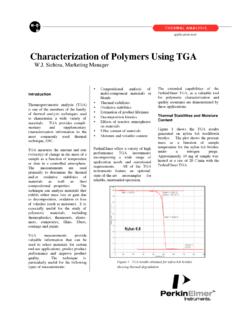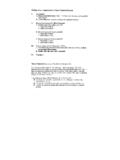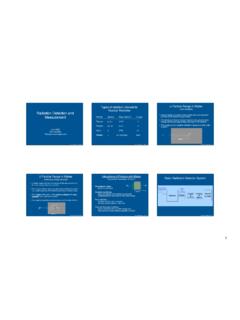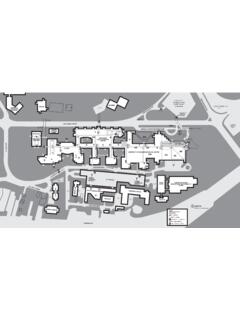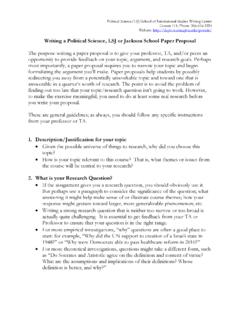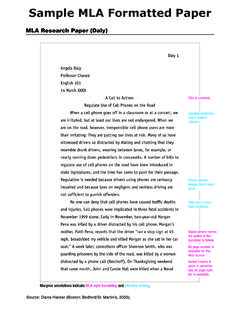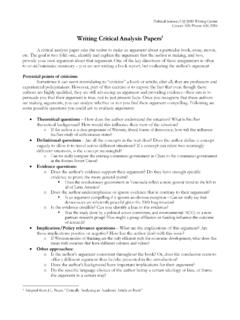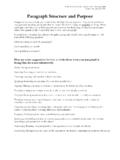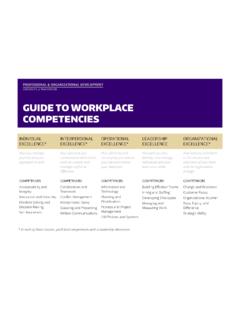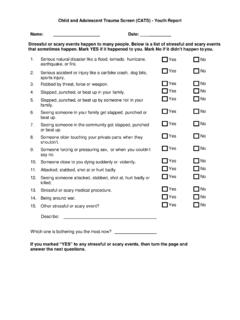Transcription of Clinical Features and Electrodiagnosis of Ulnar Neuropathies
1 C l i n i c a l F e a t u re s a n d E l e c t ro d i a g n o s i s o f U l n a r N e u ro p a t h i e s a, b Mark E. Landau, MD *, William W. Campbell, MD, MSHA. KEYWORDS. Ulnar neuropathy Electrodiagnosis EMG Sensitivity Specificity KEY POINTS. The most common locations for Ulnar mononeuropathy are at the retroepicondylar (RTC). groove and the humeroulnar arcade. Precise localization of the Ulnar nerve below and above the elbow with submaximal stimulations improves accuracy of the distance measurement. The factors that can lead to spuriously low nerve conduction velocity (NCV) across the elbow include a cold elbow and falsely low distance measurements.
2 Multiple internally consistent abnormalities should be present to ensure accurate diagnosis of Ulnar neuropathy at the elbow. In the setting of Ulnar mononeuropathies, when routine electrodiagnostic studies fail to demonstrate focal slowing of NCV across the elbow, short-segment techniques should be done. The electromyographer should ascertain the specific point of abnormality (ie, the RTC. groove, humeroulnar arcade, or other location) prior to surgical referrals. INTRODUCTION. The Ulnar nerve may be compressed at several sites.
3 Ulnar neuropathy at the elbow (UNE) is the second most frequent upper extremity compression neuropathy. There are 4 different sites of potential compression in the region of the elbow. The nerve may also sustain focal injury in the wrist and hand and even less frequently in the axilla, upper arm, or forearm. Distinguishing between these different compression sites is not Disclaimer: The views expressed are those of the authors and do not reflect the official policies of the Department of the Army, the Department of Defense, or the US Government.
4 A Department of Neurology, Walter Reed National Military Medical Center, 8900 Wisconsin Ave, Bethesda, MD 20815, USA; b Department of Neurology, Uniformed Services University of the Health Sciences, Bethesda, MD 20814, USA. * Corresponding author. E-mail address: Phys Med Rehabil Clin N Am 24 (2013) 49 66. 1047-9651/13/$ see front matter Published by Elsevier Inc. 50 Landau & Campbell always straightforward. In most cases, the earliest electrodiagnostic findings are demyelinating. Early diagnosis and management can prevent secondary axonal damage and permanent disability.
5 RELEVANT ANATOMY. Anatomic details are important in understanding focal Ulnar ,2 The Ulnar nerve branches from the medial cord of the brachial plexus and courses in the forearm just medial to the brachial artery. It passes between the medial intermuscular septum (MIS) and the medial head of the triceps prior to reaching the medial epicon- dyle. The existence of the arcade of Struthers between the MIS and medial head of the triceps is The nerve then passes just dorsal to the ME, and into the Ulnar groove, ventral to the olecranon process (OP).
6 It subsequently passes beneath the humeroulnar aponeurotic arcade (HUA), a dense aponeurosis between the tendinous attachments of the flexor carpi ulnaris (FCU) muscle typically cm to cm distal to the The nerve then runs through the belly of the FCU and exits from the muscle through the deep flexor pronator aponeurosis. In elbow extension, the medial epicondyle and OP are juxtaposed, with the HUA. slack and the nerve lying loosely in the groove. With elbow flexion, the OP moves forward and away from the ME. The humeral head of the FCU, attached to the ME, and the Ulnar head, attached to the OP, are pulled apart, progressively tightening the HUA across the nerve, resulting in pressure increases up 19 mm Hg in the Ulnar In addition, with elbow flexion, the Ulnar collateral ligament bulges into the floor of the groove and the medial head of the triceps may be pulled into the groove from In extension, the Ulnar groove is smooth, round, and capacious, but in flexion the nerve finds itself in inhospitable surroundings, in a flattened.
7 Tortuous, and narrow canal with the HUA pulled tightly across it. In full flexion, the nerve partially or completely subluxes out of its groove in many normal The only motor branches in the forearm are those to the FCU and flexor digitorum profundus (FDP). The palmar Ulnar cutaneous branch (PUC) separates from the main trunk in the mid to distal forearm, and enters the hand superficial to the Guyon canal, supplying sensation to the skin of the hypothenar region. The dorsal Ulnar cutaneous (DUC) branch leaves the main trunk 5 cm to 10 cm proximal to the wrist, arcs around the ulna, and innervates the dorsal skin of the medial hand and fingers.
8 The Ulnar nerve then enters the hand through the Guyon canal. The transverse carpal ligament , which arches over and forms the roof of the carpal tunnel, dips downward to form the floor of the Guyon canal. The roof, lateral, and medial boundaries of the canal are formed by the volar carpal ligament and the thin palmaris brevis muscle, hook of the hamate, and the pisiform bone, respectively. Just beyond the transverse carpal ligament , the pisohamate ligament runs from the pisiform bone to the hook of the hamate and forms the distal part of the floor of the canal.
9 The nerve exits the Guyon canal by passing beneath the pisohamate ligament . In the hand, the nerve bifurcates into the superficial terminal division and the deep palmar division. The superficial terminal portion supplies sensation to the small finger and Ulnar half of the ring finger. The deep palmar branch subserves no cutaneous sensation but innervates all of the hypothenar muscles, the third and fourth lumbricals, all of the palmar and dorsal interossei, the adductor pollicis, the deep head of the flexor pollicis brevis, and the first dorsal interosseous (FDI).
10 There are frequent anatomic variations. Anatomic factors account for much of the susceptibility of the Ulnar nerve to injury at the elbow. The lack of protective covering over the nerve in its course through the Ulnar Electrodiagnosis of Ulnar Neuropathies 51. groove accounts for its susceptibility to external pressure. Repetitive elbow flexion and extension may predispose to UNE because of the dynamic changes in the nerve's passageway with motion. With elbow joint derangement due to trauma or arthritic changes, the nerve's vulnerability increases even further.
